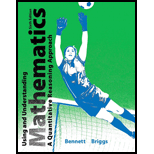
Concept explainers
Credit Card Agreement. The following rules are among the provisions of a credit card agreement.
For the regular plan, the minimum payment due is the greater of $10.00 or 5% of the new balance shown on your Statement (rounded to the nearest $1.00) plus unpaid late fees and returned check fees, and any amounts shown as past due on your statement.
If make a purchase a regular plan, no finance charges will be imposed in any billing period in which (i)
there is no previous balance or (ii) payments received and credits issued by the payment due date, which is 25 days after the statement closing date shown on your last statement, equal or exceed the previous balance. If the new balance is not satisfied in full by the payment due date shown on your last statement there will be a charge on each purchase from the date of purchase.
a. If the new balance in your account is $8 and have $35 in unpaid late fees, what is your minimum payment due?
b. Suppose you have a previous balance $150 and you pay $200 one month after the statement closing date. Will you be assessed a finance charge?
c. In part (b) if you make a purchase on the same day that you make the $200 payment will a finance charge be assessed on that purchase?
Want to see the full answer?
Check out a sample textbook solution
Chapter 1 Solutions
Using and Understanding Mathematics: A Quantitative Reasoning Approach (6th Edition)
- math help plzarrow_forward1. Show that, for any non-negative random variable X, EX+E+≥2, X E max X. 21.arrow_forwardFor each real-valued nonprincipal character x mod k, let A(n) = x(d) and F(x) = Σ : dn * Prove that F(x) = L(1,x) log x + O(1). narrow_forwardBy considering appropriate series expansions, e². e²²/2. e²³/3. .... = = 1 + x + x² + · ... when |x| < 1. By expanding each individual exponential term on the left-hand side the coefficient of x- 19 has the form and multiplying out, 1/19!1/19+r/s, where 19 does not divide s. Deduce that 18! 1 (mod 19).arrow_forwardProof: LN⎯⎯⎯⎯⎯LN¯ divides quadrilateral KLMN into two triangles. The sum of the angle measures in each triangle is ˚, so the sum of the angle measures for both triangles is ˚. So, m∠K+m∠L+m∠M+m∠N=m∠K+m∠L+m∠M+m∠N=˚. Because ∠K≅∠M∠K≅∠M and ∠N≅∠L, m∠K=m∠M∠N≅∠L, m∠K=m∠M and m∠N=m∠Lm∠N=m∠L by the definition of congruence. By the Substitution Property of Equality, m∠K+m∠L+m∠K+m∠L=m∠K+m∠L+m∠K+m∠L=°,°, so (m∠K)+ m∠K+ (m∠L)= m∠L= ˚. Dividing each side by gives m∠K+m∠L=m∠K+m∠L= °.°. The consecutive angles are supplementary, so KN⎯⎯⎯⎯⎯⎯∥LM⎯⎯⎯⎯⎯⎯KN¯∥LM¯ by the Converse of the Consecutive Interior Angles Theorem. Likewise, (m∠K)+m∠K+ (m∠N)=m∠N= ˚, or m∠K+m∠N=m∠K+m∠N= ˚. So these consecutive angles are supplementary and KL⎯⎯⎯⎯⎯∥NM⎯⎯⎯⎯⎯⎯KL¯∥NM¯ by the Converse of the Consecutive Interior Angles Theorem. Opposite sides are parallel, so quadrilateral KLMN is a parallelogram.arrow_forwardBy considering appropriate series expansions, ex · ex²/2 . ¸²³/³ . . .. = = 1 + x + x² +…… when |x| < 1. By expanding each individual exponential term on the left-hand side and multiplying out, show that the coefficient of x 19 has the form 1/19!+1/19+r/s, where 19 does not divide s.arrow_forwardLet 1 1 r 1+ + + 2 3 + = 823 823s Without calculating the left-hand side, prove that r = s (mod 823³).arrow_forwardFor each real-valued nonprincipal character X mod 16, verify that L(1,x) 0.arrow_forward*Construct a table of values for all the nonprincipal Dirichlet characters mod 16. Verify from your table that Σ x(3)=0 and Χ mod 16 Σ χ(11) = 0. x mod 16arrow_forwardFor each real-valued nonprincipal character x mod 16, verify that A(225) > 1. (Recall that A(n) = Σx(d).) d\narrow_forward24. Prove the following multiplicative property of the gcd: a k b h (ah, bk) = (a, b)(h, k)| \(a, b)' (h, k) \(a, b)' (h, k) In particular this shows that (ah, bk) = (a, k)(b, h) whenever (a, b) = (h, k) = 1.arrow_forward20. Let d = (826, 1890). Use the Euclidean algorithm to compute d, then express d as a linear combination of 826 and 1890.arrow_forwardarrow_back_iosSEE MORE QUESTIONSarrow_forward_ios
 College AlgebraAlgebraISBN:9781305115545Author:James Stewart, Lothar Redlin, Saleem WatsonPublisher:Cengage Learning
College AlgebraAlgebraISBN:9781305115545Author:James Stewart, Lothar Redlin, Saleem WatsonPublisher:Cengage Learning Algebra and Trigonometry (MindTap Course List)AlgebraISBN:9781305071742Author:James Stewart, Lothar Redlin, Saleem WatsonPublisher:Cengage Learning
Algebra and Trigonometry (MindTap Course List)AlgebraISBN:9781305071742Author:James Stewart, Lothar Redlin, Saleem WatsonPublisher:Cengage Learning

